This is part of our Top 20 Franchise series, where we list the top twenty players for a baseball franchise based on Wins Above Replacement. This is not necessarily the order we may rate these players, but WAR gives us a way to construct a list so we can comment on these players, who range from noteworthy to legendary.
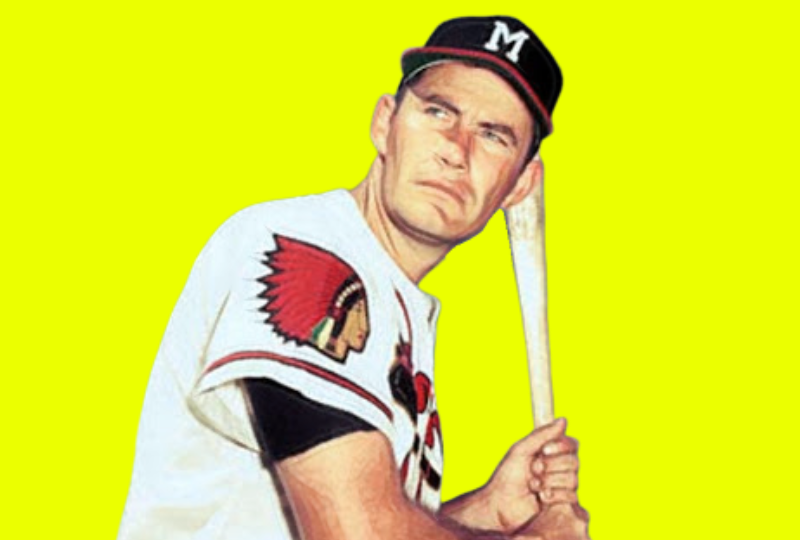
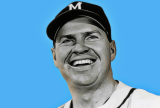
Crandall was good enough to be a starting catcher in the major leagues when he was 19, the only man to ever do that. Crandall was also the best defensive catcher in the National League in the 1950s and made eight All-Star teams. He had a strong arm and cut down runners as well as almost anyone in baseball in the 1950s. Unfortunately he was overshadowed by Roy Campanella, otherwise Crandall would be remembered more readily.
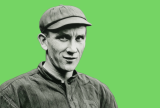
Rabbit Maranville was a singularly unique player. He was described as an “imp” and “a pixie,” and The Sporting News dubbed him the “Peter Pan of baseball.” But despite his phenomenal defensive ability and crowd-pleasing showmanship, he nearly drank himself out of the game in the middle of his career. Only a thoughtful gesture by Branch Rickey allowed the tiny shortstop to build a Hall of Fame career.
Maranville was famous for clowning around and for making unusual defensive plays with flair, much like Ozzie Smith, Omar Vizquel, and Elvis Andrus later. With his acrobatic defense and antics, Maranville demanded attention when he was on the diamond. One of his famous maneuvers was his waist-high basket catch on infield pop ups. He liked to spring himself into the air on double play pivots, a practice that earned him the nickname “Rabbit” from an admirer when he was in the minor leagues.
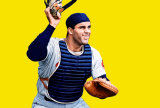
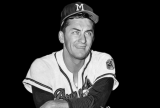
Logan was funny in a sarcastic way and popular with his teammates. A little like Yogi Berra, he became known for his malapropisms. Once, at a banquet, Logan told the assembled audience, “It’s an honor to be on the stage with the immoral Stan Musial.” After retiring from the diamond, he worked for one season with colorful Bob Uecker on Milwaukee Brewers television broadcasts and spent decades scouting for the club. He made Milwaukee his home, and died there at the age of 86, still one of the most popular players in the history of the city. “He came to love the Brewers,” Uecker said. “He considered himself a Brewer more than he was a Brave. He would do anything for the team.”
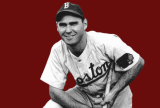
In his rookie season Holmes played with Paul Waner, the former Pittsburgh batting champion. Waner had two great loves: alcohol and hitting a baseball. He loved talking about hitting too, and in Holmes he found an eager pupil. Waner saw potential in his young teammate, but he wanted Holmes to pull the ball more.
“See that foul line over there? I’m going to show you how to hit it,” Waner told Holmes. “Never hit the ball where three guys can catch it, not with that wind blowing in at Braves Field. Shoot for the foul lines.”
Holmes listened and hit .307 for his career at Braves Field, .302 overall. He had some of his finest seasons when the best ballplayers were off fighting World War II (Holmes had a sinus condition that kept him out of the military), but he still hit pretty damn good after the boys came back too. The Braves later rushed Holmes into the managerial role and his tenure with the club ended on a sour note when he was fired during the season over the phone.
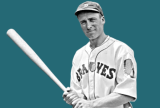
Berger was a tall, lanky German from Chicago, with blonde hair, fair skin, and blue eyes. When he was five years old he moved with his family to San Francisco where his father was part of the large migration of German and Irish immigrants who arrived in the Bay Area to help rebuild after the Great Earthquake. Wally grew up in the Mission District, which was teeming with activity in the 1910s. Young Wally watched Harry Heilmann and Lefty O’Doul play for the San Francisco Seals and grew to star for his high school team, before accepting $5 per game to play in semi-pro leagues.
Before he put on his first big league uniform, Wally Berger played six years in semi-pro baseball in San Francisco and in the Pacific Coast League. He was a strong, right-handed batter who pulled the ball, an excellent fastball hitter. He hit as many as 40 home runs in the minors and always hit well above .300 as he fought to get attention from big league clubs. After he hit those 40 homers in 1929 for the Los Angeles Angels, the Boston Braves bought Berger’s contract for either $40,000 or $50,000, depending on the source. Wally got none of that money, and he stewed over it.
The best rookie season ever by a position player is probably Joe Jackson’s 1911, when he batted .408 with 233 hits. Ted Williams, Albert Pujols, and Dick Allen each had excellent rookie seasons, and Mike Trout was great in his rookie year too. In 1930, angered by being paid less than what he felt he was worth, and irritated that it took so long for him to make it to the top rung, Berger punished NL pitchers to the tune of 38 homers, 119 RBIs, and a .614 slugging percentage. He set a record for home runs and RBIs by a rookie (since surpassed). His OPS of .990 remains one of the ten best ever by a rookie who appeared in at least 125 games. After the season Wally demanded a $5,000 raise from the Braves, and he got it.
As fast as his start was, Berger’s decline was nearly as rapid. The Giants acquired him in a trade, but manager Bill Terry used Berger in a platoon role, which rankled the proud veteran. He was traded to the Reds where he was reunited with Bill McKechnie, his longtime manager in Boston. Allowed to play regularly once again, Berger hit 16 homers in 99 games. But for some reason, maybe a shoulder injury he suffered at some point, Wally was often left out of the lineup. He hit 30 homers in his first 190 games for the Reds, but even his old pal McKechnie lost faith and stopped playing him, ultimately releasing Berger early in 1940. He signed with the Phillies and batted .317 in 20 games, but was released again. Maybe his countless salary holdouts got Wally blackballed.
Berger was 35, old for a ballplayer, but acceptable for a sailor, when he enlisted in the Navy in World War II. He spent three years as a baseball coach at the Naval Air Training Station in San Diego. He scouted for a few years after leaving the Navy, but never again swung a bat in anger on a ballfield. His 199 home runs for the Boston Braves were the most hit for that franchise in that city, and his 241 homers in the 1930s trailed only Mel Ott among National Leaguers.
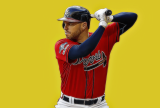
Freeman was offered a full scholarship to play college baseball and when he was drafted 78th in the MLB Draft, most observers thought he’d choose to forgo the professional ranks and take the free ride. But Freeman decided to sign with the Braves at the age of 17. Three years later he was in the big leagues. Before his 24th birthday and three years before he could be a free agent, Freeman chose to ink an eight-year deal with Atlanta, even though it was certain to be under market value within 12 months. He’s always marched to his own tune, a maverick attitude that’s made him popular with Atlanta fans. He’s going to have a more valuable career than Anthony Rizzo, and has a chance to win a batting title and also move into the top 25 all-time at his position. In 2020, Freeman contracted Covid-19, but while that seemed difficult at the time, he recovered and had a fantastic short season, winning the NL Most Valuable Player Award.
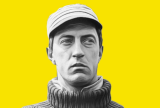
Willis threw overhanded, from way over his head, using every inch of his vast height, reinforced by a lofty hill. The ball, therefore, came down on a lightning slant, and you never knew when it would cave you in.” — The Sporting News
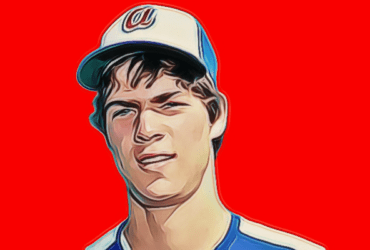
Murphy had his first huge season in 1982, when he hit 36 home runs and was named MVP. He was better the next season, hit 36 homers again and led the league in RBIs again, he also stole 30 bases. He was named MVP again, too. An amazing thing happened: Murphy had basically the same season again in 1984, 1985, and 1987. He kept winning Gold Gloves and he won two home run crowns, but they didn’t give him the MVP because, well enough already, right? But for six years from 1982 to 1987, Murphy was as good as anyone had been in a very long time. He averaged 110 runs, 36 homers, 105 RBIs, 18 stolen bases, and 306 total bases, while being the best center fielder in baseball, or pretty damn close. Murph missed only three games in those six years.
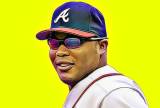
Jones is the most recent of the three great center fielders who played for the Braves, the other two being Wally Berger and Dale Murphy. All three won home run titles, all three were excellent center fielders. Each of them was a right-handed power hitter, and they were each tall, strong athletes. All of them, Wally & Murph & The Curacao Kid, spent their last few years bouncing to other teams. All three experienced a sharp drop off in their early 30s, and as a consequence, none of the three are in the Hall of Fame, despite being three of the best candidates at their position.
When he was 27, Jones consulted Willie Mays, hoping to finally break through at the plate. Mays worked with Jones to widen his stance and pull the inside pitch. The next season Jones hit 27 home runs before the All-Star break and 51 for the season. He became the first player to reach 300 home runs before his 30th birthday, and Andruw did it when he was 28.
You could win some money at the bar with this one: Which player holds the Braves’ record for most home runs in a season? Of course it’s Andruw Jones, but most people will guess Chipper or Murphy or Hank Aaron or Eddie Mathews or Fred McGriff, or maybe even Bob Horner. Some smarty pants might remember Joe Adcock, Darrell Evans and Davey Johnson, but they’ll be wrong and you’ll get a free drink.
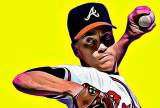
An avid golfer, Glavine took the adage “Drive for show, putt for dough,” and applied it to pitching. Glavine was never the hardest thrower on any pitching staff he was on, but he could locate each of his pitches on the edge of the plate. He was known for his circle change, a pitch that dipped out of the strike zone at the last second.
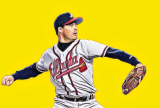
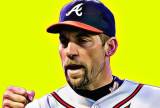
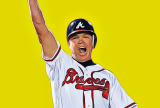
Jones had a lot in common with Mickey Mantle, one of only two switch-hitters who hit more home runs than Chipper. Both Mickey and Chipper were born in the south, originally shortstops, and both were influenced heavily by their fathers. Both players had serious knee injuries early in their career. Bobby Cox, who played with Mantle, saw the similarities. “Chipper didn’t steal many bases after his knee injury,” Cox said, “but he ran like Mickey, had that same gait, the way his shoulders were when he ran, and of course he hit for power both ways like Mick.” Both Chipper and Mickey played a lot in October. Mantle hit 18 homers with 40 RBIs and batted .257 in 65 postseason games, Chipper hit 13 homers with 47 RBIs and batted .287 in 93 postseason games. Both Chipper and Mick were famous for off-field shenanigans.
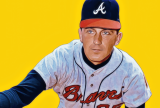
Three men changed Niekro’s life: his father Joe Sr., Paul Richards, and Bob Uecker. Mr. Niekro taught both of his sons (including little brother Joe Jr.) how to throw a knuckleball. Richards was general manager of the Braves when he decided Niekro should be a starting pitcher. Phil tossed a two-hit shutout in his first start after Richards tabbed him for the rotation. And Uecker was the catcher who proved someone could catch Niekro’s knuckler, saving Phil from being banished forever to the minor leagues.
Joe Niekro Sr. was the son of a coal miner in eastern Ohio. He played baseball for a few semi-pro teams and learned the knuckleball from an old pitcher whose name has been lost to history. That man must have known a thing or two, because Joe Sr. pitched for years in Ohio and relied heavily on his knuckler. Phil and Joe were taught the pitch in their backyard and the old man’s tutelage ended up providing both men with a livelihood for decades. Phil and Junior won 539 games, a record for brothers.
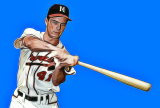
Mathews was a natural with the bat, and he was capable against big league pitching at a very early age. While he was playing for the Atlanta Crackers in the minors in the early 1950s, Mathews was observed by Ty Cobb, who fell in love with the big kid. “I’ve only known three or four perfect swings in my time,” said Cobb. “This lad has one of them.”
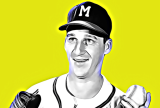
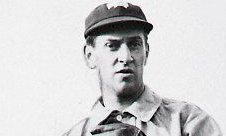
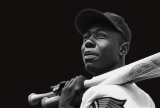
The pitchers in the National League had no idea how to get Aaron out with their best stuff near the plate. He pummeled their fastball, he handled the breaking stuff. He could cover the outside and inside parts of the plate. Pitchers were flummoxed. So they started wasting pitches out of the zone, and those pitches didn’t have much on them. What do you do if you see a fastball ten miles per hour slower thrown at your knuckles or six inches above the letters? You can let it go, or you can do what young Henry did: punish it. Aaron feasted on throwaway pitches, slop the pitchers were hoping he might flail at. Once the league saw he would swing at their weak stuff out of the zone, they stopped it, and went back to Plan A, which never worked either, of course. Teammate Joe Adcock said, “Sneaking a fastball past Henry was like trying to sneak the sunrise past a rooster.”
Gradually, Henry developed into “Bad Henry” and finally Hank. That is, as he matured, Aaron became a pull-hitting power-hitter. When the Braves moved south and Aaron saw the dimensions in Atlanta’s ballpark, it didn’t require a high baseball IQ to realize what he needed to do. He averaged 37 homers per season in the nine seasons in Atlanta, as opposed to 33 in Milwaukee when he was younger and in his prime. Aaron was always trying to gain an edge, to take what pitchers gave him. That’s why he’s one of the ten greatest players in history.
This feature list was written by Dan Holmes, founder of Baseball Egg. Dan is author of three books on baseball, including Ty Cobb: A Biography, The Great Baseball Argument Settling Book, and more. He previously worked as a writer and digital producer for the National Baseball Hall of Fame, as well as Major League Baseball Advanced Media.
No reproduction of this content is permitted without permission of the copyright holder. Links and shares are welcome.
No posts found!